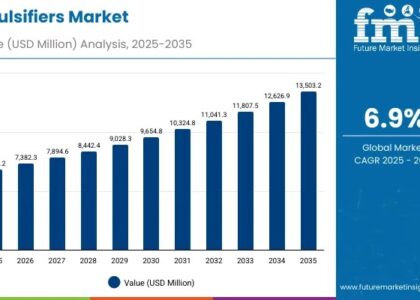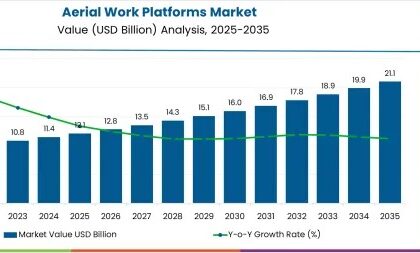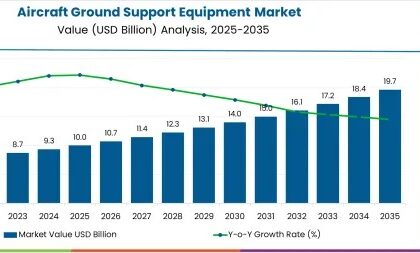The convenience food market is expected to have a delicious rise between 2023 and 2033, growing at an impressive 7.2% compound annual growth rate (CAGR). The fast-paced modern lifestyle and the growth of urbanization drive the need for convenient meal options that offer rapid and hassle-free preparation. The appeal of quick meals grows more alluring as people find themselves stressed for time, fueling the expansion of the convenience food business globally.
The convenience food market’s growth trajectory is ignited by variables, with shifting consumer preferences and cutting-edge product development playing critical roles. Consumers can embrace the convenience and comfort of pre-packaged meals thanks to rising disposable incomes, especially in emerging nations where a growing middle class looks for time-saving culinary solutions.
Convenience food producers simultaneously take advantage of the chance to adapt to consumers’ changing tastes and preferences by developing novel goods that satisfy consumer needs for healthier, natural, and individualized convenience food options. This convergence of consumer demands and industry innovation fosters an exciting era of culinary convenience, propelling the market’s increasing trend.
Get Market Growth Summary with Exclusive Report Sample: https://www.futuremarketinsights.com/reports/sample/rep-gb-96
Key Takeaways from the Convenience Food Market:
- With a sizeable market share of 17.2%, the United States dominates the market for convenience foods. This demonstrates the nation’s strong preference for fast food options, influenced by busy schedules and a strong desire for time-saving meal options.
- Germany’s 6.2% market share demonstrates the hunger for convenience meals in the nation. This shows that German customers increasingly seek quick and simple meal options to meet their busy lifestyles.
- With a sizable market share of 10.2%, China exhibits exceptional market growth. The rising demand for fast food options in the Chinese market is mostly due to the country’s growing middle class, urbanization, and shifting consumer preferences.
- With a significant market share of 4.6%, Japan demonstrates the inclination of Japanese customers for convenience food. An engaged workforce and a need for quick and practical food options might explain this.
- Australia and the United Kingdom have smaller market shares of 1.8% and 3.9%, respectively. However, due to factors including evolving lifestyles, urbanization, and a growing need for quick-to-prepare foods, these markets still provide market penetration and expansion opportunities.
“The growing demand for convenience food in today’s fast-paced lifestyle. With consumers seeking convenient meal options that save time and effort, the convenience food industry is witnessing significant growth, driven by a variety of ready-to-eat and pre-packaged options. This trend is expected to continue as consumers prioritize convenience without compromising on taste and nutrition” – says a lead Future Market Insights (FMI) analyst.
Competitive Landscape
The market for convenience foods has a very high level of competitiveness. To keep ahead of the competition, the market is dominated by several significant businesses continually inventing and creating new items. Several smaller regional competitors are also present in the market and frequently have a price and convenience advantage.
Nestle
Swiss multinational food and beverage corporation Nestle has its headquarters in Vevey. By revenue, Nestle is the biggest food corporation in the world, and it dominates the market for convenience foods. Lean Cuisine, Stouffer’s, and Hot Pockets are a few of Nestle’s convenience food brands.
Unilever
An international consumer goods manufacturer headquartered in London, England, is called Unilever. The second-largest food firm in the world by revenue, Unilever, is well-represented in the market for convenience foods. The convenience food brands owned by Unilever include Knorr, Hellmann’s, and Ben & Jerry’s.
Tyson Foods
The corporate headquarters of the American multinational food company Tyson Foods is in Springdale, Arkansas. The world’s biggest producer and marketer of chicken, beef, and pork, Tyson Foods also holds a sizable share of the convenience food market. Jimmy Dean, Hillshire Farm, and Ball Park are some of Tyson Foods’ convenience food brands.
Conagra Brands
Chicago, Illinois, serves as the corporate headquarters for Conagra Brands, an American international food corporation. It is well-known in the market for convenience foods. Convenience food brands owned by Conagra Brands.
Need Assistance? Get in Touch with Our Sales Team Today: https://www.futuremarketinsights.com/checkout/96
Key Developments
- The expansion of Internet sales has significantly boosted the demand for convenience foods. Consumers are using digital platforms to conveniently buy their preferred convenience food goods as online grocery shopping is popular.
- The emergence of meal kits has altered customer attitudes toward home cooking in the convenience food industry. These pre-packaged kits give customers pre-portioned ingredients and thorough instructions so they can easily make home-cooked meals without worrying about grocery shopping or meal planning.
Key Segments Profiled in the Convenience Food Market Survey
By Type:
- Frozen Foods
- Canned Foods
- Chilled Foods
- Ready-To-Eat Snacks
- Meals
By Distribution Channel:
- Supermarkets/Hypermarkets
- Departmental Stores
- Mom & Pop Shops
- Convenience Stores
By Region:
- North America
- Latin America
- Asia Pacific
- Middle East and Africa
- Europe
Click Here to Request Methodology Details on the Convenience Food Market. https://www.futuremarketinsights.com/request-report-methodology/rep-gb-96
About Future Market Insights (FMI)
Future Market Insights, Inc. (ESOMAR certified, recipient of the Stevie Award, and a member of the Greater New York Chamber of Commerce) offers profound insights into the driving factors that are boosting demand in the market. FMI stands as the leading global provider of market intelligence, advisory services, consulting, and events for the Packaging, Food and Beverage, Consumer Technology, Healthcare, Industrial, and Chemicals markets. With a vast team of over 5000 analysts worldwide, FMI provides global, regional, and local expertise on diverse domains and industry trends across more than 110 countries.
Contact Us:
Future Market Insights Inc.
Christiana Corporate, 200 Continental Drive,
Suite 401, Newark, Delaware – 19713, USA
T: +1-845-579-5705
For Sales Enquiries: sales@futuremarketinsights.com
Website: https://www.futuremarketinsights.com
LinkedIn| Twitter| Blogs | YouTube






